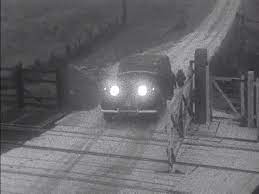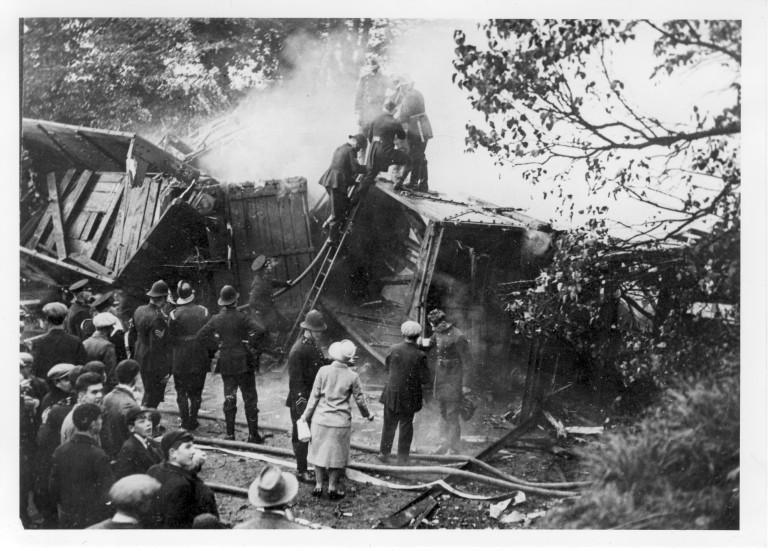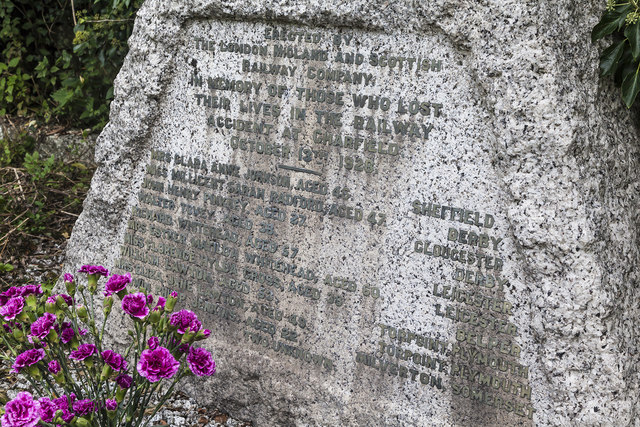The UK's rail network, dating back to 1825, stands as a testament to centuries of history and the countless passengers who have traversed its tracks. Yet, beneath the clatter of wheels and the hustle of commuters, a shroud of ghostly tales and inexplicable occurrences adds an enigmatic layer to these stations and train lines. Within this spectral realm, stations rumoured to be haunted weave stories of tragedy, loss, and the enduring presence of the past.
Here are some of the train stations reported to be haunted:
Conington Crossing, Cambridgeshire: A Haunting Fog of History
Conington is a small rural village, little more than a hamlet, and is close to the Great North Road about seven miles south of Peterborough. The very fine parish church of All Saints is some distance from the village and it possesses an especially magnificent west tower which can be seen, embowered in trees to the west, by travellers on the East Coast Main Line.
Nestled within the quiet embrace of Conington and just over a mile east of the church, a seemingly unassuming crossing on the East Coast Main Line harbours a chilling past. March 1948 saw a collision between a light engine and a lorry carrying German prisoners-of-war, the latter on their way to local fenland farms. The dense fog that characterised the area set the stage for this tragedy, claiming the lives of six prisoners. In the same year, a prominent Peterborough resident's black Chrysler met its end on the tracks, leaving behind a trail of fatalities and near-misses.
The crossing, unaided by signals, had been a perilous junction for decades. Users manually operated its gate, contending with lightning-speed trains slicing through the quiet countryside. It was a location that earned a reputation as being a serious danger and after pressure a signal box was built to control the crossing.
Conington Crossing is remote, quiet and lonely. Several signalmen have reported the appearance of a large black limousine, clearly waiting to cross the line. When they went to open the gates; however, the car vanished. This phenomenon has been reported at various times of the day and night and follows the same pattern each time. The spectral car is not the only phenomena reported however. Locals believe that the crossing is also haunted by the German prisoners-of-war.
The signal box was later closed and demolished to incorporate a high-tech signalling centre in Peterborough. Conington Crossing is still there and to this day few people volunteer to be there, especially after dark.
Reputedly, the crossing was frequented by an ethereal black limousine, poised at the tracks only to vanish when approached. This eerie phenomenon, accompanied by sightings of German prisoners-of-war, entrenched Conington Crossing in a legacy of haunting.
King’s Cross Station, London: An Unseen Cry from the Flames
The bustling thoroughfare of King's Cross Station conceals a spectral secret amid its surging crowds. Amidst the commuters' frenzy, witnesses occasionally glimpse a woman, modern in attire, with long brown hair. Her mournful scream beckons the compassionate, only to dissolve into thin air. This phenomenon harks back to the station's tragic fire in 1987, a blaze that claimed lives and imprinted an apparition eternally bound to its history.
Shrewsbury Railway Station, Shrewsbury: Ghostly Council and Eerie Shadows
Shrewsbury's Grade II listed railway station echoes with more than the clatter of trains. A local councillor, eternally awaiting a train that will never come, materialises at the entrance from Castle Street and platform three. Legend speaks of his demise beneath a collapsing roof, etching his presence into the station's spectral landscape.
Bodmin Road, Cornwall: Echoes of a Fateful Descent
The landowners around Bodmin and the citizens of the town did not welcome the proposal initially that their town should be an early addition to the burgeoning railway network. The first plans and schemes therefore amounted to nothing, and it was not until 1874 that the Cornwall and West Cornwall railway companies proposed a branch from Bodmin Road on the main line from Plymouth to the west of Cornwall. This proposed route required a lengthy and expensive tunnel and plans stalled.The Great Western Railway, having absorbed the two earlier companies, proposed to build a line to Bodmin as soon as possible and after obtaining parliamentary approval for the line from Bodmin Road on a different alignment from the original suggestion, the first sod was cut on April 26th 1884 with the line opened in 1887.
In 1903 an accident occurred close to Bodmin Road Station. A platelayer called Bricknell was in charge of two two small trolleys loaded with old sleepers. These trolleys crushed Bricknell to death after they lost control of them in an area with a downward gradient after having had heavy rain. The coroner at the inquest was clear in his condemnation of the lack of safety arrangements.
It was not long after the accident that reports of a figure described as being ragged began to be seen. Accompanying reports also included hearing ear-piercing screams of pain. It was both seen and heard by gangers walking the line during daylight hours and as dusk and few who experienced it were left in any doubt that it was the ghost of the unfortunate Bricknell - a poignant reminder of the dangers that once lurked on the line.
Liverpool Street Station, London: Phantom Patroller of the Platforms
Liverpool Street Station's bustling platforms harbour a lone figure, clad in overalls, patrolling the depths of night. Commuters and night-shift staff alike have encountered his apparition, caught even on CCTV, though he vanishes before any inquiry is concluded. The station's potential connection to London's past burial grounds only adds to the allure of its spectral mysteries.
Crewe Railway Station, Crewe: A Tapestry of Ghostly Whispers
Crewe Station, steeped in historical significance, reveals a tapestry of hauntings within its walls. Children's footsteps reverberate through time, joined by the ethereal presence of a phantom cat. The north subway, once rumoured to be frequented by Queen Victoria herself, now carries an air of unease that shivers through the bones of those who pass.
Charfield, Gloucestershire: Echoes of a Tragic Collision
Charfield was a wayside station on the Birmingham to Bristol main line of the former Midland Railway, situated to the north-east of Bristol. Early on the morning of 13th October 1928, a Wolverhampton to Bristol goods train was being shunted back off the line to clear the way for a fast overnight mail train from Leeds to Bristol. This train overran signals and crashed into the reversing goods train, part of which was still on the main line itself. A freight train from the Bristol direction was slowly passing at the time, and the mail train locomotive, coming off the rails, crashed into it. With three trains involved and colliding, this was a significant accident. At the point of impact, the carriages of the mail train carrying a few passengers piled up under the bridge and caught fire. Fifteen people died and the fire raged for twelve hours.
Among the dead were two children, a boy of about eleven and a girl around the age of two or three. The children appeared to be travelling together and unaccompanied by an adult. The children had been observed by the fireman of the mail train chatting to the guard at Birmingham New Street. The children he reported were well dressed and the boy appeared to be in a school uniform. He had been unable to give further details, before dying himself from injuries.
Bodies recovered from the mail train were so badly burned that identification was often impossible. These were buried in the local parish churchyard and the LSMR, successor to the Midland Railway, erected a memorial with the names of those buried close by. The boy and girl, who could not be named and identified, are remembered on the memorial as ‘Two Unknown.’
Charfield station's chilling past resurfaces each year on the anniversary of the devastating crash. Witnesses describe an apparition of a grieving woman in black, standing vigil by their memorial in the churchyard, a mother forever bound to her lost children even in death.
As the UK's rail network continues to thread the nation with its storied tracks, these spectral tales serve as reminders of lives lost, mysteries unsolved, and the enduring bond between history and the present. Amidst the hustle and grind of modernity, the echoes of the past persist, their whispers carried by the wind that rustles through stations and platforms steeped in the enigma of the unknown.























